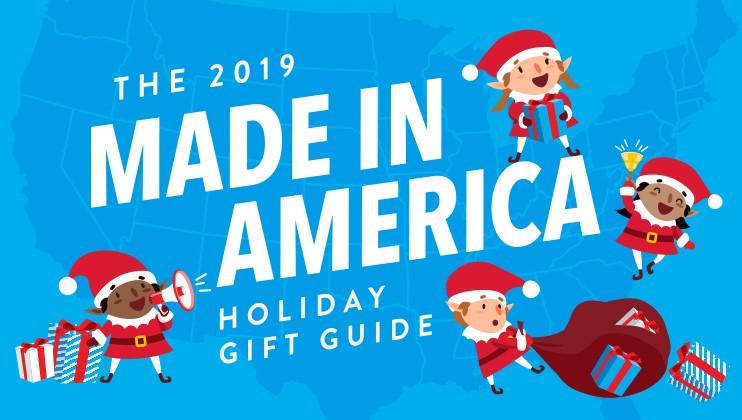
This is always a good post for Black Friday.
It’s been several years now since I scratched an itch to promote our American manufacturing by joining a (sadly ill-fated) venture called American Certified. One thing that short foray gave me, though, was a place on the mailing list of the Alliance for American Manufacturing, a union-backed promoter of (you guessed it) American manufacturing. Its president Scott Paul is perhaps among those I’ve most quoted on this site, and arguably first among non-Maryland non-politicians.
The AAM has, over the last several years, created what they call their “Made in America Gift Guide.” It actually worked well hand-in-hand with an effort by the Patriot Voices group (the people who keep two-time Presidential candidate and former Pennsylvania senator Rick Santorum in the news on occasion) called the Made in the U.S.A. Christmas Challenge, but that challenge has seemed to go by the wayside, leaving AAM as the sole purveyor and promoter of American-made Christmas gifts.
This is year 6 for AAM and they picked at least one item from each state – 83 overall by my count. I thought Delaware’s selected entry this year was a little bit off the wall, but then again RAPA ships its scrapple around the country during holiday time (November to February.) It may not be the gift for everyone on your list, but I’m sure there are some who now live in other regions of the country who wouldn’t mind a taste of home.
But in a neat piece of irony (and no pun intended) the selected Maryland gift comes from an Eastern Shore company called Butter Pat Industries. Their claim to fame? Hand-crafted cast iron skillets, which have drawn the attention and raves from cooking aficionados. (That’s why I’ve never heard of them, since I burn water.)
Since I quote him so often, here’s what AAM’s Scott Paul had to say:
Everything on this year’s list is new, and many of the ideas came from readers like you.
We think there’s something for everyone on your gift list. Our team made sure to include a mix of items at a variety of price points.
If everyone in the United States spent $64 of their holiday budget on American-made products, it would support 200,000 new factory jobs! But we know it can be hard to find Made in America goods in big box stores or at the local mall.
By putting together this list, we hope to shine a spotlight on some great companies who support local jobs and their communities — and make it easier for folks like you to find great American-made gifts during the busy holiday season.
Scott Paul, Alliance for American Manufacturing press release, November 26, 2019.
Of course, they also strive to not repeat gifts from year to year so Delaware’s list has varied nicely over the years: baby accessories, unglazed cookware, handcrafted gifts and furnishings, Jell-O mix (!), and – of course – Dogfish Head ales. (Too bad they didn’t give the late lamented 16 Mile brewery the same love.) The Eastern Shore has also been represented in Maryland’s selection on a couple previous occasions, including Paul Reed Smith guitars.
So if one of your Christmas goals is to shop local, this guide is a pretty good place to begin. And the job you save may be that of someone you know.


 First of all, let me get you up to speed on what I wrote.
First of all, let me get you up to speed on what I wrote.